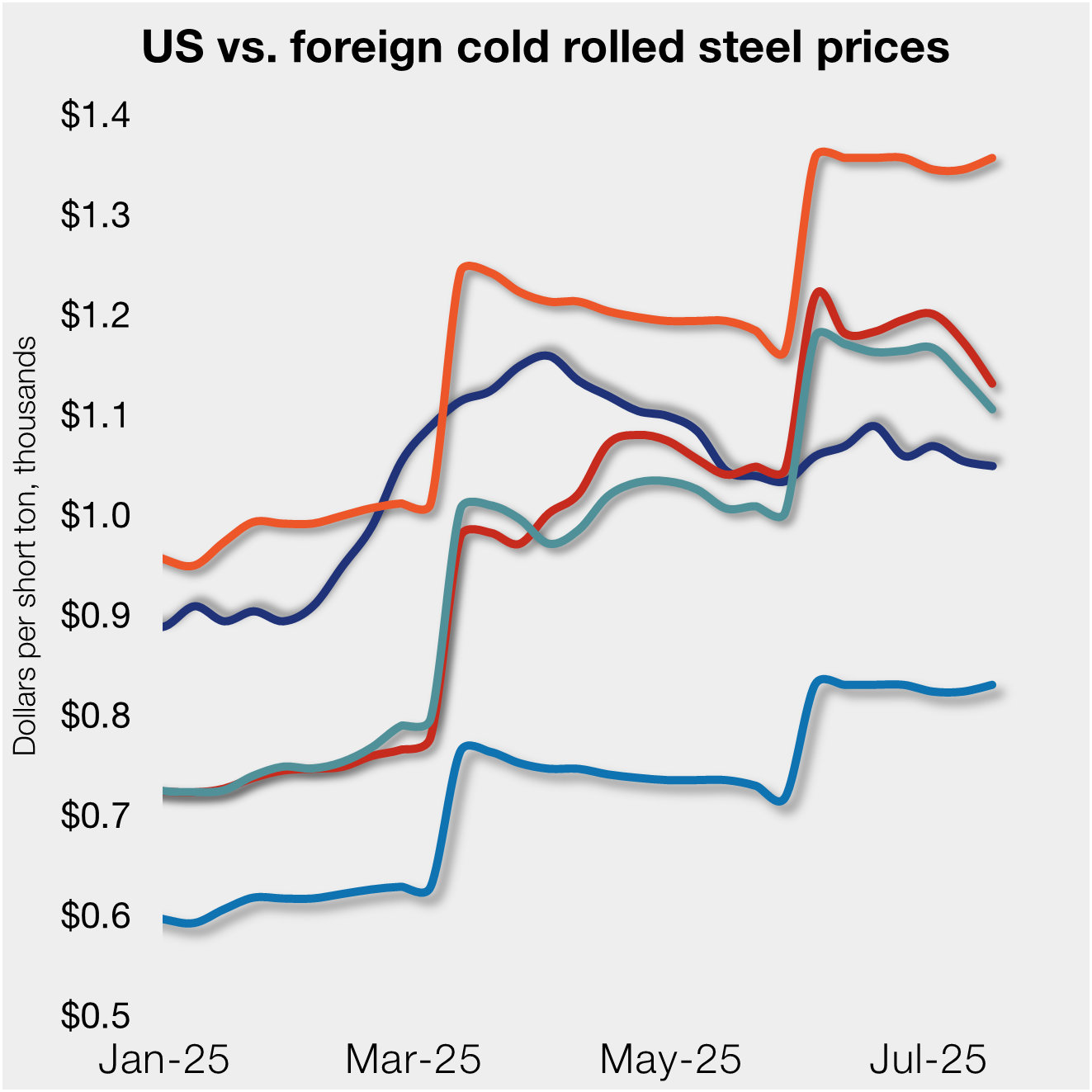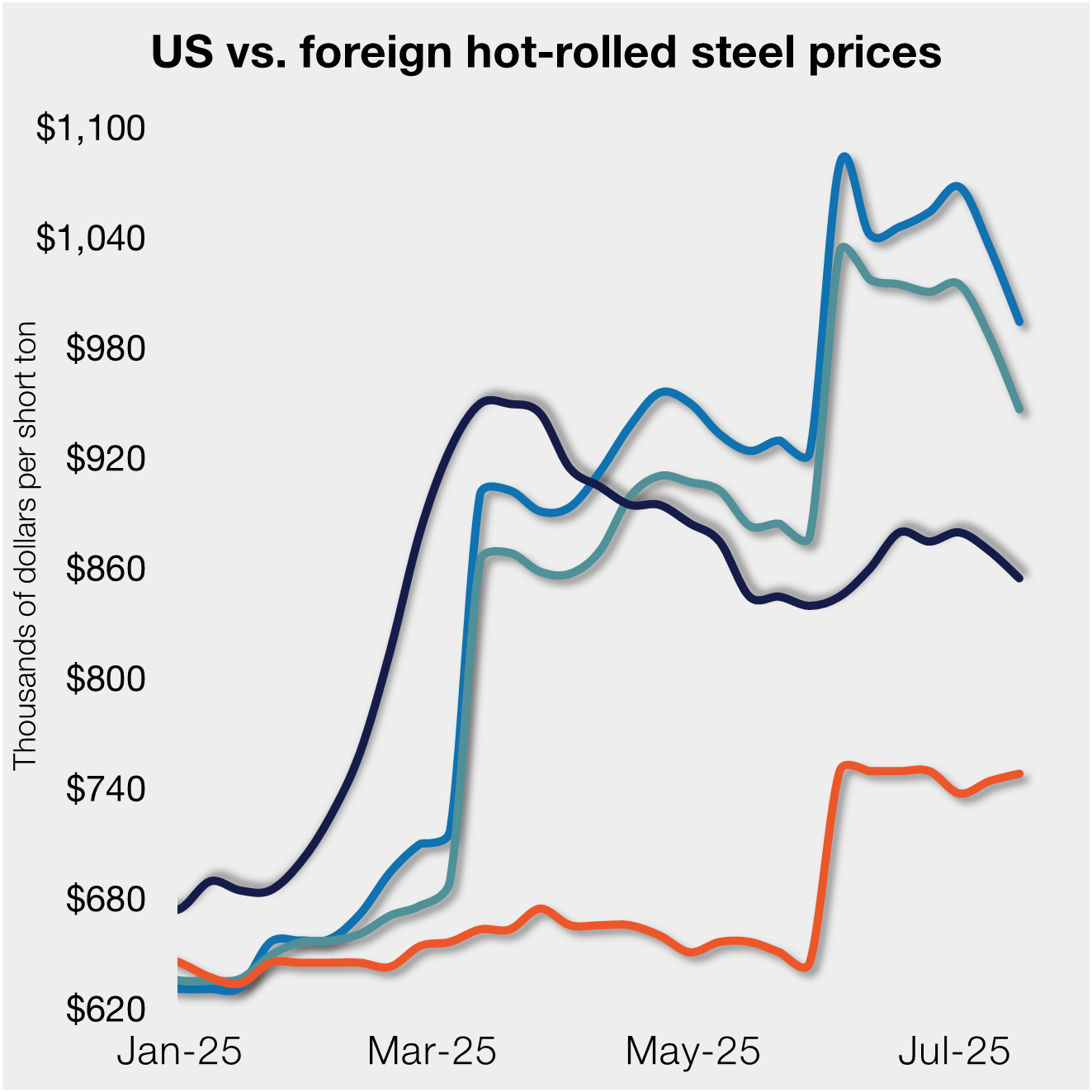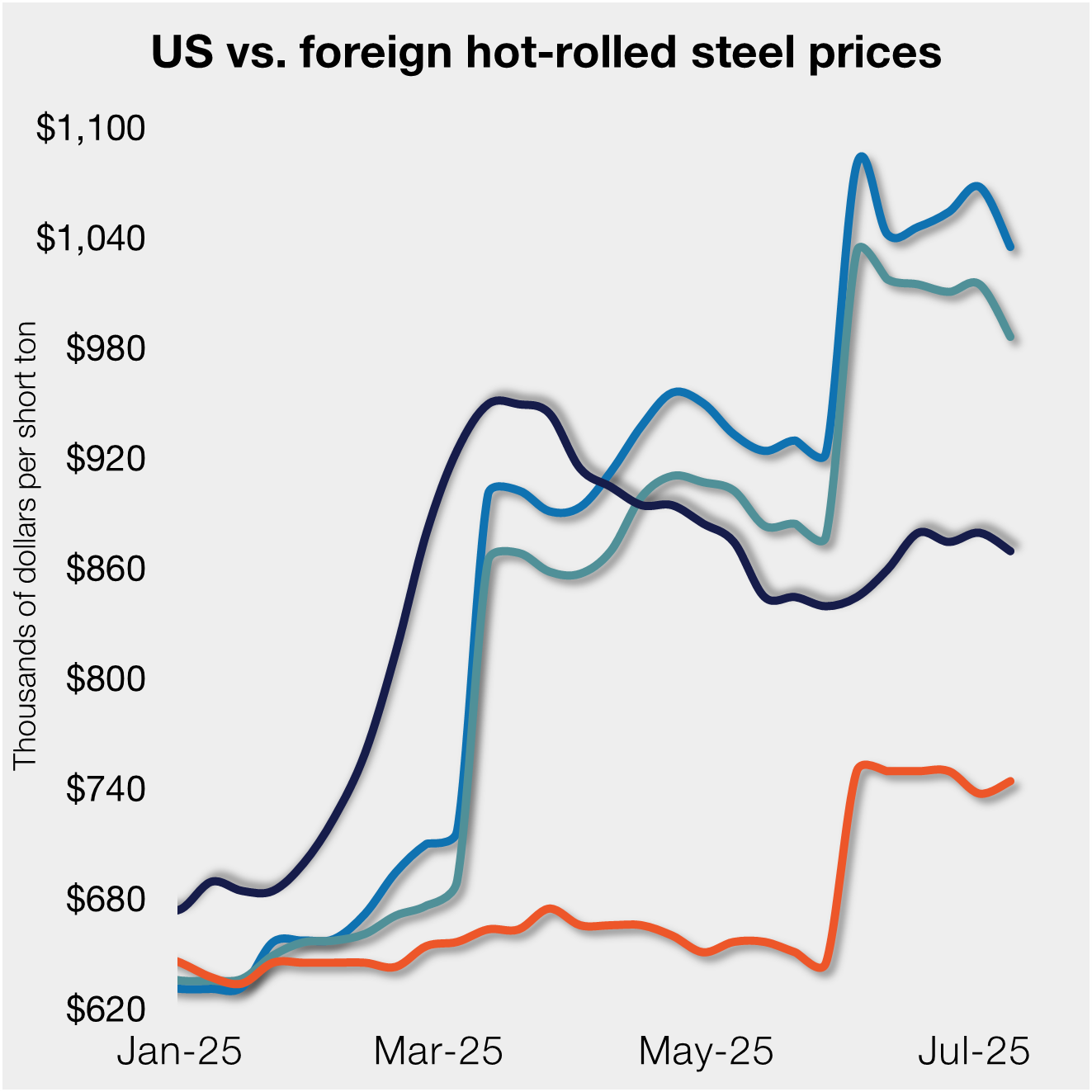International Steel Prices
SMU Spotlight: Alex Anderson Talks Scrap
Written by Becca Moczygemba
April 13, 2023
Some people like to talk scrap, but not many talk as much scrap as CRU’s Senior Analyst, Alexandra (Alex) Anderson.
 We sat down with Alex ahead of the ISRI conference to discuss the role scrap plays in the steel industry.
We sat down with Alex ahead of the ISRI conference to discuss the role scrap plays in the steel industry.
A lightly edited version of the interview is below.
Steel Market Update: How long have you been in the steel industry?
Alex Anderson: Altogether, I’ve been in the industry for eight years. I started doing ferroalloys right out of college. I did that for about a year, then left to explore some other opportunities. I’ve been with CRU for seven years now.
SMU: How did you make the switch from ferroalloys to steel?
AA: I had been doing ferroalloys for about six years and it was time for a change. I wanted to do something new. There was an opening at CRU for steel. With ferroalloys there’s a lot and it’s very high level. You cover many markets, and you don’t really get to deeply explore a single product. I wanted to be more than a jack of all trades.
SMU: How has your experience with ferroalloys carried over to steel?
AA: Certainly the people aspect of it. Keeping open communication with data providers and making sure that you have a finger on the pulse of what’s going on with the market.
SMU: So, you interact with the market daily? Is that the biggest part of your job?
AA: I’ll say most days I’m interacting in some way. Whether it’s reaching out or sharing information, there’s some sort of exchange happening. There’s also the part of CRU subscriptions where you get analyst access. We have regular market calls with clients who want a deeper understanding of what’s going on or what our forecast is. That’s a big part of it, just helping our clients make decisions and help them better understand their markets.
SMU: Can you tell me more about the analyst access? I can just call you up and talk to you?
AA: With a certain subscription level you are afforded time with analysts. It can be a formal presentation or a monthly call with an update on what we’re doing and what our latest forecast data is. It’s a time for clients to ask about what pertains to them instead of just reading the monitor or looking through the market outlook. They can have their questions answered.
SMU: Kind of like when you call your stockbroker?
AA: Yeah. If there’s anything specific they want to talk about, we can have the data compiled. Or if they have other questions, we can connect them to the economics team. For example, if they have questions about iron ore. We bring in different aspects.
SMU: I can see the benefits of that. You can get more granular with a one on one. What other products would you bring in, in a hypothetical situation?
AA: Well, we have an all-encompassing metallics monitor that comes out every month. So, I cover the North American portion of that, but it’s global coverage. Then there’s the pricing and analysis report that comes out monthly. Plus, the market outlook and price updates. We also have the long-term steel market outlook, which covers metallics. It takes into account emissions and green steel, and it goes out to 2050.
SMU: What’s the overall impact that scrap has on the steel market?
AA: It’s significant. With the large share of EAFs that are in the US, the raw material for that is primarily scrap. It’s more of a circular production process where scrap is melted down and new steel is created from it. Looking at hot-rolled coil or rebar or wire rod, or any of those products, scrap is a portion of the cost. Fluctuations in scrap pricing and availability of material can support or put downward pressure on those markets.
SMU: There was a major earthquake in Turkey back in February, and I know Turkey plays a big role in scrap. Can you talk a bit about that?
AA: Yeah, Turkey is a significant portion of the US export scrap market. With the earthquake, we sort of weren’t sure whether they would even be in the market for anything. A lot of people were expecting prices to fall, and prices typically do come off in February anyway. There’s not a lot of activity happening. To the contrary, Turkey ended up being out for maybe two weeks, and then they sort of jumped back into the market to try to get a leg up on rebuilding. So that caused that sort of flurry of demand, then pushed prices up. As a result, we saw export prices rise, which then caused an already tighter market in the US because there wasn’t as much availability due to slower flows. That led to this large upswing in in scrap pricing. So, we saw $100 month-on-month increase in some areas. And then generally it was a $50 to $70 increase in in March that we saw.
SMU: ISRI is coming up next week, right? Will you be there?
AA: Yes, CRU will have a booth there. There will be several of us in attendance. My colleague Ryan McKinley will be presenting, and I will be there meeting with contacts. I’ll be introducing myself as the scrap analyst at CRU and look forward to meeting as many people as I can.
SMU: So you want people to stop by and say hi?
AA: Yes, of course. Absolutely!
SMU: I think working in the steel industry is really special. Being a woman in the steel industry, I’ve had my own experiences and challenges. What has your experience been like and what advice would you give other women starting in the industry?
AA: There’s obviously challenges, and each company has its own culture. I’ve seen that generally, at least in the past five years, we’re starting to see more women, which is great. I think being a woman in a male-dominated industry, you sort of feel pressure to try to fit in with the guys. But, overall, my experience has been very good. I do think it’s important to have diverse perspectives, and everyone has something they can bring to the table. As far as advice for women starting out in the industry, I would just say stick with it because I mean, like you said, it’s a very special industry.
SMU: Last question. What’s your favorite part of working in this industry?
AA: The people and the connections.
By Becca Moczygemba, becca@steelmarketupdate.com

Becca Moczygemba
Read more from Becca MoczygembaLatest in International Steel Prices

CRC price declines tighten US vs. EU gap
Cold-rolled (CR) coil prices continued to tick lower in the US this week, with a similar trend seen in offshore markets.

CRU Outlook: Near-term regional steel price trends will diverge
Chinese steel export prices are expected to rise and support prices across most of Asia in the coming month. In Europe, buyers are likely to frontload import orders ahead of CBAM imposition, while new trade agreements are likely to emerge in the US. Steel prices in the APAC are expected to rise, except in India […]

US, EU HR prices decline, doubled S232 tariffs maintain the gap
Stateside prices continue to trail imports from Europe, supported by Section 232 steel tariffs that were doubled in early June.

S232 tariffs keep US HR prices below imports from EU
Hot-rolled (HR) coil prices in the US ticked down this week but have fluctuated little over the past month. Stateside tags continue to trail imports from Europe, supported by Section 232 steel tariffs that were doubled in early June.

Doubled S232 tariff holds US HR prices below EU
David Schollaert presents this week's analysis of hot-rolled coil prices, foreign vs. domestic.
